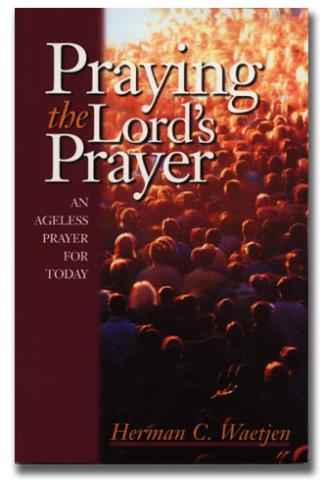
Overview
Praying the Lord's Prayer intends to make a major contribution to the rehabilitation of this prayer Jesus taught his disciples almost two thousand years ago. It does this by establishing a frame of reference from which the Lords Prayer is to be prayed and by which the meaning of its individual petitions becomes transparent. Drawn from the Gospels according to Matthew and Luke, in which the prayer is embedded, this frame of reference is the self-understanding of the Christian community as the household of God's adult sons and daughters. The Epilogue presents a version of the Lords Prayer for the future based on the interpretation of the Prayer itself.
The adult study guide (above) is divided into ten sessions of study related to the ten chapters of this book.
Adult Study Guide
Teaching a ten session adult Bible study with Praying the Lord's Prayer is made easy with this study guide. See the 'Words to the Convener' section on the first page for course detail and preparation.
Reviews
The author's intent is to "rehabilitate" the prayer that Jesus taught his disciples almost 2000 years ago. Waetjen establishes a frame of reference from which the Lord's prayer is to be prayed. He also clarifies and interprets the meaning of the individual petitions that make up much of the prayer. No longer will one recite the words by rote but with more understanding of the Christian community as the household of God's daughters and sons. Waetjen puts the petitions into a cultural context of the Judeo-Christian world. A short glossary follows.
The book would be useful to adult education groups wishing to learn how to make this wonderful prayer more personal though a better understanding of the culture in which it originated.
Arnold Rzepecki
Catholic Library World
In this book the author discusses differences in the Lord's Prayer as it appears in the Gospel of Matthew and the Gospel of Luke. He examines the history of the prayer in the Hebrew writers, and then moves forward from Christ to the interpretations of St. Paul. Finally he concludes with his own suggestions for translating the prayer for our twentieth-century needs.
... One of the better parts of the book has to do with the qualities of the petitions and forms of address that have made this prayer endure through the centuries. Also included is a helpful glossary of terms that are frequently stumbling blocks to Christian dialogue.
Subtitling his book "An Ageless Prayer for Today," Professor Waetjen emphasizes the roots and future of this most familiar prayer, and stresses it's power for unification.
Barbara Booth
Crosspoint, 2000